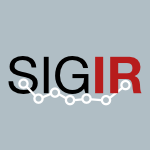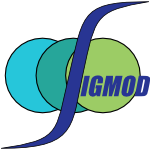152 papers:
 CASE-2015-ZonEHJVSB #detection #multi #realtime #using
CASE-2015-ZonEHJVSB #detection #multi #realtime #using- Real-time collision detection for multiple packaging robots using monotonicity of configuration subspaces (RvZ, DE, DH, IJ, RV, RIS, KB), pp. 1638–1643.
 ICML-2015-BahadoriKFL #clustering #functional
ICML-2015-BahadoriKFL #clustering #functional- Functional Subspace Clustering with Application to Time Series (MTB, DCK, YF, YL), pp. 228–237.
 ICML-2015-WangWLCW #learning #multi #segmentation
ICML-2015-WangWLCW #learning #multi #segmentation- Multi-Task Learning for Subspace Segmentation (YW, DPW, QL, WC, IJW), pp. 1209–1217.
 ICML-2015-WangWS #analysis #clustering
ICML-2015-WangWS #analysis #clustering- A Deterministic Analysis of Noisy Sparse Subspace Clustering for Dimensionality-reduced Data (YW, YXW, AS), pp. 1422–1431.
 ICML-2015-WangZ #clustering #named #parametricity
ICML-2015-WangZ #clustering #named #parametricity- DP-space: Bayesian Nonparametric Subspace Clustering with Small-variance Asymptotics (YW, JZ), pp. 862–870.
 ICML-2015-YangRV #clustering
ICML-2015-YangRV #clustering- Sparse Subspace Clustering with Missing Entries (CY, DR, RV), pp. 2463–2472.
 ICML-2015-YouV #geometry
ICML-2015-YouV #geometry- Geometric Conditions for Subspace-Sparse Recovery (CY, RV), pp. 1585–1593.
 ICML-2015-ZhouZ #problem
ICML-2015-ZhouZ #problem- Safe Subspace Screening for Nuclear Norm Regularized Least Squares Problems (QZ, QZ), pp. 1103–1112.
 KDD-2015-PengKLC #approximate #clustering #rank #using
KDD-2015-PengKLC #approximate #clustering #rank #using- Subspace Clustering Using Log-determinant Rank Approximation (CP, ZK, HL, QC), pp. 925–934.
 DATE-2014-YuSHEAB #estimation #performance #physics
DATE-2014-YuSHEAB #estimation #performance #physics- Efficient performance estimation with very small sample size via physical subspace projection and maximum a posteriori estimation (LY, SS, CH, IME, DAA, DSB), pp. 1–6.
 ICALP-v1-2014-NelsonN #bound
ICALP-v1-2014-NelsonN #bound- Lower Bounds for Oblivious Subspace Embeddings (JN, HLN), pp. 883–894.
 CIKM-2014-NtoutsiSRK #clustering #difference #quote #recommendation
CIKM-2014-NtoutsiSRK #clustering #difference #quote #recommendation- “Strength Lies in Differences”: Diversifying Friends for Recommendations through Subspace Clustering (EN, KS, KR, HPK), pp. 729–738.
 CIKM-2014-TaoIWS #analysis #canonical #correlation
CIKM-2014-TaoIWS #analysis #canonical #correlation- Exploring Shared Subspace and Joint Sparsity for Canonical Correlation Analysis (LT, HHSI, YW, XS), pp. 1887–1890.
 ICML-c1-2014-HsiehO
ICML-c1-2014-HsiehO- Nuclear Norm Minimization via Active Subspace Selection (CJH, PAO), pp. 575–583.
 ICPR-2014-Ahn #adaptation #online #performance #robust
ICPR-2014-Ahn #adaptation #online #performance #robust- Fast Adaptive Robust Subspace Tracking for Online Background Subtraction (JHA), pp. 2555–2559.
 ICPR-2014-ArvanitopoulosBT #analysis #learning
ICPR-2014-ArvanitopoulosBT #analysis #learning- Laplacian Support Vector Analysis for Subspace Discriminative Learning (NA, DB, AT), pp. 1609–1614.
 ICPR-2014-DengZS #learning #recognition #speech
ICPR-2014-DengZS #learning #recognition #speech- Linked Source and Target Domain Subspace Feature Transfer Learning — Exemplified by Speech Emotion Recognition (JD, ZZ, BWS), pp. 761–766.
 ICPR-2014-FangZ #classification #learning
ICPR-2014-FangZ #classification #learning- Cross Domain Shared Subspace Learning for Unsupervised Transfer Classification (ZF, ZZ), pp. 3927–3932.
 ICPR-2014-Martinez-VargasHAAC #component #constraints #probability #recursion
ICPR-2014-Martinez-VargasHAAC #component #constraints #probability #recursion- Recursive Separation of Stationary Components by Subspace Projection and Stochastic Constraints (JDMV, CCH, AMÁM, CDAM, GCD), pp. 3469–3474.
 KDD-2014-GunnemannFRS #clustering #multi #named
KDD-2014-GunnemannFRS #clustering #multi #named- SMVC: semi-supervised multi-view clustering in subspace projections (SG, IF, MR, TS), pp. 253–262.
 KDD-2014-HeFKMP #category theory #clustering
KDD-2014-HeFKMP #category theory #clustering- Relevant overlapping subspace clusters on categorical data (XH, JF, BK, STM, CP), pp. 213–222.
 MLDM-2014-ShahamSB #fault #performance
MLDM-2014-ShahamSB #fault #performance- Efficient Error Setting for Subspace Miners (ES, DS, BBM), pp. 1–15.
 SIGIR-2014-LengCL #image #learning #random #retrieval #scalability
SIGIR-2014-LengCL #image #learning #random #retrieval #scalability- Random subspace for binary codes learning in large scale image retrieval (CL, JC, HL), pp. 1031–1034.
 ICDAR-2013-HigaH #classification #image #recognition
ICDAR-2013-HigaH #classification #image #recognition- Local Subspace Classifier with Transformation Invariance for Appearance-Based Character Recognition in Natural Images (KH, SH), pp. 533–537.
 ICDAR-2013-SuL #learning #recognition
ICDAR-2013-SuL #learning #recognition- Discriminative Weighting and Subspace Learning for Ensemble Symbol Recognition (FS, TL), pp. 1088–1092.
 STOC-2013-MengM #linear #robust
STOC-2013-MengM #linear #robust- Low-distortion subspace embeddings in input-sparsity time and applications to robust linear regression (XM, MWM), pp. 91–100.
 CIKM-2013-KellerMWB #adaptation #analysis #flexibility
CIKM-2013-KellerMWB #adaptation #analysis #flexibility- Flexible and adaptive subspace search for outlier analysis (FK, EM, AW, KB), pp. 1381–1390.
 ICML-c1-2013-WangX #clustering
ICML-c1-2013-WangX #clustering- Noisy Sparse Subspace Clustering (YXW, HX), pp. 89–97.
 ICML-c3-2013-BaktashmotlaghHBLS #analysis #classification #video
ICML-c3-2013-BaktashmotlaghHBLS #analysis #classification #video- Non-Linear Stationary Subspace Analysis with Application to Video Classification (MB, MTH, AB, BCL, MS), pp. 450–458.
 VLDB-2013-MouratidisP12 #query
VLDB-2013-MouratidisP12 #query- Computing Immutable Regions for Subspace Top-k Queries (KM, HP), pp. 73–84.
 STOC-2012-AaronsonC #quantum
STOC-2012-AaronsonC #quantum- Quantum money from hidden subspaces (SA, PC), pp. 41–60.
 STOC-2012-DvirL #set
STOC-2012-DvirL #set- Subspace evasive sets (ZD, SL), pp. 351–358.
 CIKM-2012-ZhangLZW #recommendation
CIKM-2012-ZhangLZW #recommendation- Relation regularized subspace recommending for related scientific articles (QZ, JL, ZZ, LW), pp. 2503–2506.
 ICML-2012-GuoX #classification #learning #multi
ICML-2012-GuoX #classification #learning #multi- Cross Language Text Classification via Subspace Co-regularized Multi-view Learning (YG, MX), p. 120.
 ICML-2012-LiLJX #clustering #re-engineering
ICML-2012-LiLJX #clustering #re-engineering- Groupwise Constrained Reconstruction for Subspace Clustering (RL, BL, CJ, XX), p. 25.
 ICPR-2012-JiS #clustering #robust #segmentation
ICPR-2012-JiS #clustering #robust #segmentation- Robust motion segmentation via refined sparse subspace clustering (HJ, FS), pp. 1546–1549.
 ICPR-2012-LiPMH #classification #email #incremental #learning #using
ICPR-2012-LiPMH #classification #email #incremental #learning #using- Business email classification using incremental subspace learning (ML, YP, RM, HYH), pp. 625–628.
 ICPR-2012-MoriyamaAS #analysis #using
ICPR-2012-MoriyamaAS #analysis #using- Face analysis of aggressive moods in automobile driving using mutual subspace method (TM, KA, NS), pp. 2898–2901.
 ICPR-2012-TuH #invariant #matrix #recognition
ICPR-2012-TuH #invariant #matrix #recognition- Dual subspace nonnegative matrix factorization for person-invariant facial expression recognition (YHT, CTH), pp. 2391–2394.
 ICPR-2012-WeiY #representation #segmentation
ICPR-2012-WeiY #representation #segmentation- Subspace segmentation with a Minimal Squared Frobenius Norm Representation (SW, YY), pp. 3509–3512.
 KDD-2012-GunnemannFS #clustering #modelling #multi #using
KDD-2012-GunnemannFS #clustering #modelling #multi #using- Multi-view clustering using mixture models in subspace projections (SG, IF, TS), pp. 132–140.
 KDD-2012-GunnemannFVS #clustering #correlation
KDD-2012-GunnemannFVS #clustering #correlation- Subspace correlation clustering: finding locally correlated dimensions in subspace projections of the data (SG, IF, KV, TS), pp. 352–360.
 MLDM-2012-PitelisT #learning
MLDM-2012-PitelisT #learning- Discriminant Subspace Learning Based on Support Vectors Machines (NP, AT), pp. 198–212.
 CASE-2011-Aguayo-LaraRR #invariant #petri net
CASE-2011-Aguayo-LaraRR #invariant #petri net- Invariant subspaces and sensor placement for observability in Continuous Timed Petri Nets (EAL, ART, JJRL), pp. 607–612.
 STOC-2011-SohlerW
STOC-2011-SohlerW- Subspace embeddings for the L1-norm with applications (CS, DPW), pp. 755–764.
 CIKM-2011-GunnemannFMAS #clustering #evaluation #metric
CIKM-2011-GunnemannFMAS #clustering #evaluation #metric- External evaluation measures for subspace clustering (SG, IF, EM, IA, TS), pp. 1363–1372.
 CIKM-2011-MullerAGS #clustering #scalability
CIKM-2011-MullerAGS #clustering #scalability- Scalable density-based subspace clustering (EM, IA, SG, TS), pp. 1077–1086.
 CIKM-2011-VinzamuriK #classification #convergence #design #using
CIKM-2011-VinzamuriK #classification #convergence #design #using- Designing an ensemble classifier over subspace classifiers using iterative convergence routine (BV, KK), pp. 693–698.
 CIKM-2011-ZhangJJ #framework #mining
CIKM-2011-ZhangJJ #framework #mining- Promotional subspace mining with EProbe framework (YZ, YJ, WJ), pp. 2185–2188.
 ECIR-2011-Rehurek #analysis #semantics
ECIR-2011-Rehurek #analysis #semantics- Subspace Tracking for Latent Semantic Analysis (RR), pp. 289–300.
 ICEIS-DISI-2010-MoraesZF #algorithm #concept #distributed
ICEIS-DISI-2010-MoraesZF #algorithm #concept #distributed- A Distributed Algorithm for Formal Concepts Processing based on Search Subspaces (NRMdM, LEZ, HCF), pp. 105–111.
 CIKM-2010-ChatterjeeBR #clustering
CIKM-2010-ChatterjeeBR #clustering- Feature subspace transformations for enhancing k-means clustering (AC, SB, PR), pp. 1801–1804.
 CIKM-2010-LuETP #clustering #video #visualisation
CIKM-2010-LuETP #clustering #video #visualisation- Visualization and clustering of crowd video content in MPCA subspace (HL, HLE, MT, KNP), pp. 1777–1780.
 CIKM-2010-MullerSS #adaptation #ranking
CIKM-2010-MullerSS #adaptation #ranking- Adaptive outlierness for subspace outlier ranking (EM, MS, TS), pp. 1629–1632.
 ECIR-2010-PiwowarskiFMLR #documentation
ECIR-2010-PiwowarskiFMLR #documentation- Filtering Documents with Subspaces (BP, IF, YM, ML, KvR), pp. 615–618.
 ICML-2010-LiuLY #rank #representation #robust #segmentation
ICML-2010-LiuLY #rank #representation #robust #segmentation- Robust Subspace Segmentation by Low-Rank Representation (GL, ZL, YY), pp. 663–670.
 ICPR-2010-GangehKD #categorisation #random
ICPR-2010-GangehKD #categorisation #random- Random Subspace Method in Text Categorization (MJG, MSK, RPWD), pp. 2049–2052.
 ICPR-2010-HanCR #categorisation #image #low level
ICPR-2010-HanCR #categorisation #image #low level- Image Categorization by Learned Nonlinear Subspace of Combined Visual-Words and Low-Level Features (XHH, YWC, XR), pp. 3037–3040.
 ICPR-2010-HarandiAABL #random #recognition
ICPR-2010-HarandiAABL #random #recognition- Directed Random Subspace Method for Face Recognition (MTH, MNA, BNA, AB, BCL), pp. 2688–2691.
 ICPR-2010-Hotta #classification #using #visual notation #word
ICPR-2010-Hotta #classification #using #visual notation #word- Scene Classification Using Local Co-occurrence Feature in Subspace Obtained by KPCA of Local Blob Visual Words (KH), pp. 4230–4233.
 ICPR-2010-PaivaT #detection #image #using
ICPR-2010-PaivaT #detection #image #using- Detection of Salient Image Points Using Principal Subspace Manifold Structure (ARCP, TT), pp. 1389–1392.
 ICPR-2010-SonaA #multi #random
ICPR-2010-SonaA #multi #random- Multivariate Brain Mapping by Random Subspaces (DS, PA), pp. 2576–2579.
 ICPR-2010-StrucDP #recognition #robust
ICPR-2010-StrucDP #recognition #robust- Confidence Weighted Subspace Projection Techniques for Robust Face Recognition in the Presence of Partial Occlusions (VS, SD, NP), pp. 1334–1338.
 ICPR-2010-YamashitaW #correlation #matrix
ICPR-2010-YamashitaW #correlation #matrix- Subspace Methods with Globally/Locally Weighted Correlation Matrix (YY, TW), pp. 4259–4262.
 ICPR-2010-YinYC #metric
ICPR-2010-YinYC #metric- Enhanced Measurement Model for Subspace-Based Tracking (SY, HJY, JYC), pp. 3492–3495.
 KDD-2010-GuptaPATV #learning #retrieval #social #social media
KDD-2010-GuptaPATV #learning #retrieval #social #social media- Nonnegative shared subspace learning and its application to social media retrieval (SKG, DQP, BA, TT, SV), pp. 1169–1178.
 SAC-2010-TeixeiraM #data type #detection
SAC-2010-TeixeiraM #data type #detection- Data stream anomaly detection through principal subspace tracking (PHdST, RLM), pp. 1609–1616.
 ICDAR-2009-Abd-AlmageedKD #documentation #linear #using
ICDAR-2009-Abd-AlmageedKD #documentation #linear #using- Page Rule-Line Removal Using Linear Subspaces in Monochromatic Handwritten Arabic Documents (WAA, JK, DSD), pp. 768–772.
 VLDB-2009-MullerGAS #clustering
VLDB-2009-MullerGAS #clustering- Evaluating Clustering in Subspace Projections of High Dimensional Data (EM, SG, IA, TS), pp. 1270–1281.
 STOC-2009-Ben-SassonK
STOC-2009-Ben-SassonK- Affine dispersers from subspace polynomials (EBS, SK), pp. 65–74.
 CIKM-2009-GunnemannMFS #concept #detection #orthogonal
CIKM-2009-GunnemannMFS #concept #detection #orthogonal- Detection of orthogonal concepts in subspaces of high dimensional data (SG, EM, IF, TS), pp. 1317–1326.
 CIKM-2009-GuZ #clustering
CIKM-2009-GuZ #clustering- Subspace maximum margin clustering (QG, JZ), pp. 1337–1346.
 VLDB-2008-KriegelKZ #clustering #correlation #detection
VLDB-2008-KriegelKZ #clustering #correlation #detection- Detecting clusters in moderate-to-high dimensional data: subspace clustering, pattern-based clustering, and correlation clustering (HPK, PK, AZ), pp. 1528–1529.
 CIKM-2008-AssentKMS #clustering #named #performance
CIKM-2008-AssentKMS #clustering #named #performance- EDSC: efficient density-based subspace clustering (IA, RK, EM, TS), pp. 1093–1102.
 CIKM-2008-LeeL #clustering #data type #multi #online
CIKM-2008-LeeL #clustering #data type #multi #online- A coarse-grain grid-based subspace clustering method for online multi-dimensional data streams (JWL, WSL), pp. 1521–1522.
 CIKM-2008-PengLS #adaptation #clustering #multi
CIKM-2008-PengLS #adaptation #clustering #multi- Clustering multi-way data via adaptive subspace iteration (WP, TL, BS), pp. 1519–1520.
 CIKM-2008-ZhangPW #named
CIKM-2008-ZhangPW #named- REDUS: finding reducible subspaces in high dimensional data (XZ, FP, WW), pp. 961–970.
 ICML-2008-HamL #analysis #learning
ICML-2008-HamL #analysis #learning- Grassmann discriminant analysis: a unifying view on subspace-based learning (JH, DDL), pp. 376–383.
 ICPR-2008-BianT
ICPR-2008-BianT- Harmonic mean for subspace selection (WB, DT), pp. 1–4.
 ICPR-2008-KobayashiO #strict
ICPR-2008-KobayashiO #strict- Cone-restricted subspace methods (TK, NO), pp. 1–4.
 ICPR-2008-NaYKC #learning
ICPR-2008-NaYKC #learning- Relevant pattern selection for subspace learning (JHN, SMY, MK, JYC), pp. 1–4.
 ICPR-2008-Sakai #approach #classification #incremental #monte carlo
ICPR-2008-Sakai #approach #classification #incremental #monte carlo- Monte Carlo subspace method: An incremental approach to high-dimensional data classification (TS), pp. 1–4.
 ICPR-2008-WuF #3d #classification #learning #multi #using
ICPR-2008-WuF #3d #classification #learning #multi #using- Multiple view based 3D object classification using ensemble learning of local subspaces (JW, KF), pp. 1–4.
 ICPR-2008-ZhaoGLJ #learning #modelling
ICPR-2008-ZhaoGLJ #learning #modelling- Spatio-temporal patches for night background modeling by subspace learning (YZ, HG, LL, YJ), pp. 1–4.
 KDD-2008-ChenJCLWY #classification #kernel #learning
KDD-2008-ChenJCLWY #classification #kernel #learning- Learning subspace kernels for classification (JC, SJ, BC, QL, MW, JY), pp. 106–114.
 KDD-2008-HuangDLL #clustering #equivalence #higher-order
KDD-2008-HuangDLL #clustering #equivalence #higher-order- Simultaneous tensor subspace selection and clustering: the equivalence of high order svd and k-means clustering (HH, CHQD, DL, TL), pp. 327–335.
 KDD-2008-JiTYY #classification #multi
KDD-2008-JiTYY #classification #multi- Extracting shared subspace for multi-label classification (SJ, LT, SY, JY), pp. 381–389.
 KDD-2008-MoiseS #approach #clustering #novel #statistics
KDD-2008-MoiseS #approach #clustering #novel #statistics- Finding non-redundant, statistically significant regions in high dimensional data: a novel approach to projected and subspace clustering (GM, JS), pp. 533–541.
 KDD-2008-MullerAKJS #clustering #interactive #named
KDD-2008-MullerAKJS #clustering #interactive #named- Morpheus: interactive exploration of subspace clustering (EM, IA, RK, TJ, TS), pp. 1089–1092.
 ICDAR-2007-HirayamaNK #classification #difference #using
ICDAR-2007-HirayamaNK #classification #difference #using- A Classifier of Similar Characters using Compound Mahalanobis Function based on Difference Subspace (JH, HN, NK), pp. 432–436.
 ICDAR-2007-LongJ #classification
ICDAR-2007-LongJ #classification- Building Compact MQDF Classifier for Off-line Handwritten Chinese Characters by Subspace Distribution Sharing (TL, LJ), pp. 909–913.
 VLDB-2007-LiH #approximate #mining #multi
VLDB-2007-LiH #approximate #mining #multi- Mining Approximate Top-K Subspace Anomalies in Multi-Dimensional Time-Series Data (XL, JH), pp. 447–458.
 STOC-2007-DeshpandeV #approximate #reduction
STOC-2007-DeshpandeV #approximate #reduction- Sampling-based dimension reduction for subspace approximation (AD, KRV), pp. 641–650.
 CIKM-2007-ParkL #clustering #data type
CIKM-2007-ParkL #clustering #data type- Grid-based subspace clustering over data streams (NHP, WSL), pp. 801–810.
 ICML-2007-Warmuth
ICML-2007-Warmuth- Winnowing subspaces (MKW), pp. 999–1006.
 ICML-2007-YoganandaMG #linear #performance
ICML-2007-YoganandaMG #linear #performance- A fast linear separability test by projection of positive points on subspaces (APY, MNM, LG), pp. 713–720.
 KDD-2007-YanTS #classification #multi
KDD-2007-YanTS #classification #multi- Model-shared subspace boosting for multi-label classification (RY, JT, JRS), pp. 834–843.
 MLDM-2007-SilvaGF #identification
MLDM-2007-SilvaGF #identification- One Lead ECG Based Personal Identification with Feature Subspace Ensembles (HS, HG, ALNF), pp. 770–783.
 PPDP-2007-AntoyB
PPDP-2007-AntoyB- Computing with subspaces (SA, BB), pp. 121–130.
 CIKM-2006-ChuHCC #clustering #on the
CIKM-2006-ChuHCC #clustering #on the- On subspace clustering with density consciousness (YHC, JWH, KTC, MSC), pp. 804–805.
 CIKM-2006-DellisVVST
CIKM-2006-DellisVVST- Constrained subspace skyline computation (ED, AV, IV, BS, YT), pp. 415–424.
 ICML-2006-DingZHZ #analysis #component #invariant #named #robust
ICML-2006-DingZHZ #analysis #component #invariant #named #robust- R1-PCA: rotational invariant L1-norm principal component analysis for robust subspace factorization (CHQD, DZ, XH, HZ), pp. 281–288.
 ICML-2006-LuV #clustering
ICML-2006-LuV #clustering- Combined central and subspace clustering for computer vision applications (LL, RV), pp. 593–600.
 ICPR-v1-2006-FuTC #orthogonal #using
ICPR-v1-2006-FuTC #orthogonal #using- Specular Free Spectral Imaging Using Orthogonal Subspace Projection (ZF, RTT, TC), pp. 812–815.
 ICPR-v1-2006-GaoW #random #recognition
ICPR-v1-2006-GaoW #random #recognition- Boosting in Random Subspaces for Face Recognition (YG, YW), pp. 519–522.
 ICPR-v2-2006-FangQ #classification
ICPR-v2-2006-FangQ #classification- Car/Non-Car Classification in an Informative Sample Subspace (JF, GQ), pp. 962–965.
 ICPR-v2-2006-GrimHSP #approach #modelling #using
ICPR-v2-2006-GrimHSP #approach #modelling #using- A Subspace Approach to Texture Modelling by Using Gaussian Mixtures (JG, MH, PS, PP), pp. 235–238.
 ICPR-v2-2006-SanguansatAJM #2d #analysis #component #recognition
ICPR-v2-2006-SanguansatAJM #2d #analysis #component #recognition- Class-Specific Subspace-Based Two-Dimensional Principal Component Analysis for Face Recognition (PS, WA, SJ, SM), pp. 1246–1249.
 ICPR-v2-2006-YuW06b #mining #nondeterminism
ICPR-v2-2006-YuW06b #mining #nondeterminism- Mining Uncertain Data in Low-dimensional Subspace (ZY, HSW), pp. 748–751.
 ICPR-v3-2006-WuT06a #image #re-engineering
ICPR-v3-2006-WuT06a #image #re-engineering- A Regression Model in TensorPCA Subspace for Face Image Super-resolution Reconstruction (JW, MMT), pp. 627–630.
 ICPR-v4-2006-ChenJY06a #detection #distributed #fault
ICPR-v4-2006-ChenJY06a #detection #distributed #fault- Fault Detection in Distributed Systems by Representative Subspace Mapping (HC, GJ, KY), pp. 912–915.
 ICPR-v4-2006-KoSB #random
ICPR-v4-2006-KoSB #random- A New Objective Function for Ensemble Selection in Random Subspaces (AHRK, RS, AdSBJ), pp. 185–188.
 KDD-2006-GaoGEJ #clustering
KDD-2006-GaoGEJ #clustering- Discovering significant OPSM subspace clusters in massive gene expression data (BJG, OLG, ME, SJMJ), pp. 922–928.
 VLDB-2005-PeiJET #approach #semantics
VLDB-2005-PeiJET #approach #semantics- Catching the Best Views of Skyline: A Semantic Approach Based on Decisive Subspaces (JP, WJ, ME, YT), pp. 253–264.
 ICML-2005-PoczosL #analysis #independence #using
ICML-2005-PoczosL #analysis #independence #using- Independent subspace analysis using geodesic spanning trees (BP, AL), pp. 673–680.
 KDD-2005-ZakiPAS #algorithm #category theory #clustering #dataset #effectiveness #mining #named
KDD-2005-ZakiPAS #algorithm #category theory #clustering #dataset #effectiveness #mining #named- CLICKS: an effective algorithm for mining subspace clusters in categorical datasets (MJZ, MP, IA, TS), pp. 736–742.
 MLDM-2005-CandillierTTB #clustering #named #statistics
MLDM-2005-CandillierTTB #clustering #named #statistics- SSC: Statistical Subspace Clustering (LC, IT, FT, OB), pp. 100–109.
 MLDM-2005-SzepannekLW #classification #comprehension
MLDM-2005-SzepannekLW #classification #comprehension- Understanding Patterns with Different Subspace Classification (GS, KL, CW), pp. 110–119.
 DATE-v1-2004-VandersteenPLD #identification #linear
DATE-v1-2004-VandersteenPLD #identification #linear- Extended Subspace Identification of Improper Linear Systems (GV, RP, DL, SD), pp. 454–459.
 VLDB-2004-ZhangLLW #detection #named
VLDB-2004-ZhangLLW #detection #named- HOS-Miner: A System for Detecting Outlying Subspaces of High-dimensional Data (JZ, ML, TWL, HHW), pp. 1265–1268.
 ICML-2004-LeeWZB #perspective #probability
ICML-2004-LeeWZB #perspective #probability- Probabilistic tangent subspace: a unified view (JL, JW, CZ, ZB).
 ICPR-v1-2004-TremblaySM #algorithm #multi #nearest neighbour #optimisation #random #search-based #using
ICPR-v1-2004-TremblaySM #algorithm #multi #nearest neighbour #optimisation #random #search-based #using- Optimizing Nearest Neighbour in Random Subspaces using a Multi-Objective Genetic Algorithm (GT, RS, PM), p. 208.
 ICPR-v2-2004-CorsoDH #energy #image #segmentation
ICPR-v2-2004-CorsoDH #energy #image #segmentation- Image Segmentation Through Energy Minimization Based Subspace Fusion (JJC, MD, GDH), pp. 120–123.
 ICPR-v2-2004-FangQ #detection #learning
ICPR-v2-2004-FangQ #detection #learning- Learning Sample Subspace with Application to Face Detection (JF, GQ), pp. 423–426.
 ICPR-v3-2004-ChenYC #distance #multi #recognition
ICPR-v3-2004-ChenYC #distance #multi #recognition- Inter-Subspace Distance: A New Method for Face Recognition with Multiple Samples (JHC, SLY, CSC), pp. 140–143.
 ICPR-v3-2004-ZhangM #recognition #using
ICPR-v3-2004-ZhangM #recognition #using- Recognition of Expression Variant Faces Using Weighted Subspaces (YZ, AMM), pp. 149–152.
 ICPR-v4-2004-Amano #image
ICPR-v4-2004-Amano #image- Image Interpolation by High Dimensional Projection based on Subspace Method (TA), pp. 665–668.
 ICPR-v4-2004-LiuSCH #clustering #personalisation #using #verification
ICPR-v4-2004-LiuSCH #clustering #personalisation #using #verification- Personalized Face Verification System Using Owner-Specific Cluster-Dependent LDA-Subspace (HCL, CHS, YHC, YPH), pp. 344–347.
 ICPR-v4-2004-NakamuraFTMYMTI #image #recognition #using
ICPR-v4-2004-NakamuraFTMYMTI #image #recognition #using- Eigen Nodule: View-Based Recognition of Lung Nodule in Chest X-ray CT Images Using Subspace Method (YN, GF, HT, SM, SY, TM, YT, TI), pp. 681–684.
 KDD-2004-LiuWY #clustering #framework
KDD-2004-LiuWY #clustering #framework- A framework for ontology-driven subspace clustering (JL, WW, JY), pp. 623–628.
 SIGIR-2004-LiMO #adaptation #clustering #documentation
SIGIR-2004-LiMO #adaptation #clustering #documentation- Document clustering via adaptive subspace iteration (TL, SM, MO), pp. 218–225.
 SIGMOD-2002-Aggarwal #estimation #framework #nearest neighbour #reduction
SIGMOD-2002-Aggarwal #estimation #framework #nearest neighbour #reduction- Hierarchical subspace sampling: a unified framework for high dimensional data reduction, selectivity estimation and nearest neighbor search (CCA), pp. 452–463.
 ICPR-v1-2002-AiYX #approach #detection
ICPR-v1-2002-AiYX #approach #detection- A Subspace Approach to Face Detection with Support Vector Machines (HA, LY, GX), pp. 45–48.
 ICPR-v2-2002-Ho #analysis #proximity
ICPR-v2-2002-Ho #analysis #proximity- Exploratory Analysis of Point Proximity in Subspaces (TKH), pp. 196–199.
 ICPR-v2-2002-ZengCN #image #representation
ICPR-v2-2002-ZengCN #image #representation- Image Feature Representation by the Subspace of Nonlinear PCA (XYZ, YWC, ZN), pp. 228–231.
 DAC-2001-ChenC #analysis #grid #performance #power management #scalability
DAC-2001-ChenC #analysis #grid #performance #power management #scalability- Efficient Large-Scale Power Grid Analysis Based on Preconditioned Krylov-Subspace Iterative Methods (THC, CCPC), pp. 559–562.
 ICEIS-v1-2001-Rao #algorithm #clustering #multi
ICEIS-v1-2001-Rao #algorithm #clustering #multi- An Algorithm for Determining Subspaces Containing Clusters with Multiple Minimum Density Thresholds for Numerical Data (PRR), pp. 530–532.
 DAC-2000-WangN #analysis #linear #multi #order
DAC-2000-WangN #analysis #linear #multi #order- Extended Krylov subspace method for reduced order analysis of linear circuits with multiple sources (JMW, TVN), pp. 247–252.
 CIKM-2000-SakuraiYUK
CIKM-2000-SakuraiYUK- The Subspace Coding Method: A New Indexing Scheme for High-Dimensional Data (YS, MY, SU, HK), pp. 210–218.
 ICPR-v1-2000-RidderKLD #adaptation #segmentation
ICPR-v1-2000-RidderKLD #adaptation #segmentation- The Adaptive Subspace Map for Texture Segmentation (DdR, JK, OL, RPWD), pp. 1216–1220.
 ICPR-v2-2000-TaxD
ICPR-v2-2000-TaxD- Data Description in Subspaces (DMJT, RPWD), pp. 2672–2675.
 ICPR-v3-2000-Ichimura #feature model #segmentation #using
ICPR-v3-2000-Ichimura #feature model #segmentation #using- Motion Segmentation Using Feature Selection and Subspace Method Based on Shape Space (NI), pp. 3858–3864.
 DAC-1999-Freund #algorithm #modelling #simulation
DAC-1999-Freund #algorithm #modelling #simulation- Passive Reduced-Order Models for Interconnect Simulation and Their Computation via Krylov-Subspace Algorithms (RWF), pp. 195–200.
 KDD-1999-ChengFZ #clustering #mining
KDD-1999-ChengFZ #clustering #mining- Entropy-based Subspace Clustering for Mining Numerical Data (CHC, AWCF, YZ), pp. 84–93.
 SIGMOD-1998-AgrawalGGR #automation #clustering #data mining #mining
SIGMOD-1998-AgrawalGGR #automation #clustering #data mining #mining- Automatic Subspace Clustering of High Dimensional Data for Data Mining Applications (RA, JG, DG, PR), pp. 94–105.
 ICPR-1998-ArikiS #classification #multi #using
ICPR-1998-ArikiS #classification #multi #using- Classification of TV sports news by DCT features using multiple subspace method (YA, YS), pp. 1488–1491.
 ICPR-1998-BischofLP #classification #robust
ICPR-1998-BischofLP #classification #robust- A robust subspace classifier (HB, AL, FP), pp. 114–116.
 ICPR-1998-NicollsJ #estimation
ICPR-1998-NicollsJ #estimation- Maximum likelihood estimation of Toeplitz-block-Toeplitz covariances in the presence of subspace interference (FN, GdJ), pp. 1595–1597.
 ICPR-1996-ArikiI #integration #recognition
ICPR-1996-ArikiI #integration #recognition- Integration of face and speaker recognition by subspace method (YA, NI), pp. 456–460.
 DAC-1995-TelicheveskyKW #analysis #performance
DAC-1995-TelicheveskyKW #analysis #performance- Efficient Steady-State Analysis Based on Matrix-Free Krylov-Subspace Methods (RT, KSK, JW), pp. 480–484.
 ICDAR-v1-1995-ArikiM #recognition #segmentation #using
ICDAR-v1-1995-ArikiM #recognition #segmentation #using- Segmentation and recognition of handwritten characters using subspace method (YA, YM), pp. 120–123.
 ICDAR-1993-OhkuraSSH #on the #using
ICDAR-1993-OhkuraSSH #on the #using- On discrimination of handwritten similar KANJI characters by subspace method using several features (MO, YS, MS, RH), pp. 589–592.
 CASE-2015-ZonEHJVSB #detection #multi #realtime #using
CASE-2015-ZonEHJVSB #detection #multi #realtime #using ICML-2015-BahadoriKFL #clustering #functional
ICML-2015-BahadoriKFL #clustering #functional ICML-2015-WangWLCW #learning #multi #segmentation
ICML-2015-WangWLCW #learning #multi #segmentation ICML-2015-WangWS #analysis #clustering
ICML-2015-WangWS #analysis #clustering ICML-2015-WangZ #clustering #named #parametricity
ICML-2015-WangZ #clustering #named #parametricity ICML-2015-YangRV #clustering
ICML-2015-YangRV #clustering ICML-2015-YouV #geometry
ICML-2015-YouV #geometry ICML-2015-ZhouZ #problem
ICML-2015-ZhouZ #problem KDD-2015-PengKLC #approximate #clustering #rank #using
KDD-2015-PengKLC #approximate #clustering #rank #using DATE-2014-YuSHEAB #estimation #performance #physics
DATE-2014-YuSHEAB #estimation #performance #physics ICALP-v1-2014-NelsonN #bound
ICALP-v1-2014-NelsonN #bound CIKM-2014-NtoutsiSRK #clustering #difference #quote #recommendation
CIKM-2014-NtoutsiSRK #clustering #difference #quote #recommendation CIKM-2014-TaoIWS #analysis #canonical #correlation
CIKM-2014-TaoIWS #analysis #canonical #correlation ICML-c1-2014-HsiehO
ICML-c1-2014-HsiehO ICPR-2014-Ahn #adaptation #online #performance #robust
ICPR-2014-Ahn #adaptation #online #performance #robust ICPR-2014-ArvanitopoulosBT #analysis #learning
ICPR-2014-ArvanitopoulosBT #analysis #learning ICPR-2014-DengZS #learning #recognition #speech
ICPR-2014-DengZS #learning #recognition #speech ICPR-2014-FangZ #classification #learning
ICPR-2014-FangZ #classification #learning ICPR-2014-Martinez-VargasHAAC #component #constraints #probability #recursion
ICPR-2014-Martinez-VargasHAAC #component #constraints #probability #recursion KDD-2014-GunnemannFRS #clustering #multi #named
KDD-2014-GunnemannFRS #clustering #multi #named KDD-2014-HeFKMP #category theory #clustering
KDD-2014-HeFKMP #category theory #clustering MLDM-2014-ShahamSB #fault #performance
MLDM-2014-ShahamSB #fault #performance SIGIR-2014-LengCL #image #learning #random #retrieval #scalability
SIGIR-2014-LengCL #image #learning #random #retrieval #scalability ICDAR-2013-HigaH #classification #image #recognition
ICDAR-2013-HigaH #classification #image #recognition ICDAR-2013-SuL #learning #recognition
ICDAR-2013-SuL #learning #recognition STOC-2013-MengM #linear #robust
STOC-2013-MengM #linear #robust CIKM-2013-KellerMWB #adaptation #analysis #flexibility
CIKM-2013-KellerMWB #adaptation #analysis #flexibility ICML-c1-2013-WangX #clustering
ICML-c1-2013-WangX #clustering ICML-c3-2013-BaktashmotlaghHBLS #analysis #classification #video
ICML-c3-2013-BaktashmotlaghHBLS #analysis #classification #video VLDB-2013-MouratidisP12 #query
VLDB-2013-MouratidisP12 #query STOC-2012-AaronsonC #quantum
STOC-2012-AaronsonC #quantum STOC-2012-DvirL #set
STOC-2012-DvirL #set CIKM-2012-ZhangLZW #recommendation
CIKM-2012-ZhangLZW #recommendation ICML-2012-GuoX #classification #learning #multi
ICML-2012-GuoX #classification #learning #multi ICML-2012-LiLJX #clustering #re-engineering
ICML-2012-LiLJX #clustering #re-engineering ICPR-2012-JiS #clustering #robust #segmentation
ICPR-2012-JiS #clustering #robust #segmentation ICPR-2012-LiPMH #classification #email #incremental #learning #using
ICPR-2012-LiPMH #classification #email #incremental #learning #using ICPR-2012-MoriyamaAS #analysis #using
ICPR-2012-MoriyamaAS #analysis #using ICPR-2012-TuH #invariant #matrix #recognition
ICPR-2012-TuH #invariant #matrix #recognition ICPR-2012-WeiY #representation #segmentation
ICPR-2012-WeiY #representation #segmentation KDD-2012-GunnemannFS #clustering #modelling #multi #using
KDD-2012-GunnemannFS #clustering #modelling #multi #using KDD-2012-GunnemannFVS #clustering #correlation
KDD-2012-GunnemannFVS #clustering #correlation MLDM-2012-PitelisT #learning
MLDM-2012-PitelisT #learning CASE-2011-Aguayo-LaraRR #invariant #petri net
CASE-2011-Aguayo-LaraRR #invariant #petri net STOC-2011-SohlerW
STOC-2011-SohlerW CIKM-2011-GunnemannFMAS #clustering #evaluation #metric
CIKM-2011-GunnemannFMAS #clustering #evaluation #metric CIKM-2011-MullerAGS #clustering #scalability
CIKM-2011-MullerAGS #clustering #scalability CIKM-2011-VinzamuriK #classification #convergence #design #using
CIKM-2011-VinzamuriK #classification #convergence #design #using CIKM-2011-ZhangJJ #framework #mining
CIKM-2011-ZhangJJ #framework #mining ECIR-2011-Rehurek #analysis #semantics
ECIR-2011-Rehurek #analysis #semantics ICEIS-DISI-2010-MoraesZF #algorithm #concept #distributed
ICEIS-DISI-2010-MoraesZF #algorithm #concept #distributed CIKM-2010-ChatterjeeBR #clustering
CIKM-2010-ChatterjeeBR #clustering CIKM-2010-LuETP #clustering #video #visualisation
CIKM-2010-LuETP #clustering #video #visualisation CIKM-2010-MullerSS #adaptation #ranking
CIKM-2010-MullerSS #adaptation #ranking ECIR-2010-PiwowarskiFMLR #documentation
ECIR-2010-PiwowarskiFMLR #documentation ICML-2010-LiuLY #rank #representation #robust #segmentation
ICML-2010-LiuLY #rank #representation #robust #segmentation ICPR-2010-GangehKD #categorisation #random
ICPR-2010-GangehKD #categorisation #random ICPR-2010-HanCR #categorisation #image #low level
ICPR-2010-HanCR #categorisation #image #low level ICPR-2010-HarandiAABL #random #recognition
ICPR-2010-HarandiAABL #random #recognition ICPR-2010-Hotta #classification #using #visual notation #word
ICPR-2010-Hotta #classification #using #visual notation #word ICPR-2010-PaivaT #detection #image #using
ICPR-2010-PaivaT #detection #image #using ICPR-2010-SonaA #multi #random
ICPR-2010-SonaA #multi #random ICPR-2010-StrucDP #recognition #robust
ICPR-2010-StrucDP #recognition #robust ICPR-2010-YamashitaW #correlation #matrix
ICPR-2010-YamashitaW #correlation #matrix ICPR-2010-YinYC #metric
ICPR-2010-YinYC #metric KDD-2010-GuptaPATV #learning #retrieval #social #social media
KDD-2010-GuptaPATV #learning #retrieval #social #social media SAC-2010-TeixeiraM #data type #detection
SAC-2010-TeixeiraM #data type #detection ICDAR-2009-Abd-AlmageedKD #documentation #linear #using
ICDAR-2009-Abd-AlmageedKD #documentation #linear #using VLDB-2009-MullerGAS #clustering
VLDB-2009-MullerGAS #clustering STOC-2009-Ben-SassonK
STOC-2009-Ben-SassonK CIKM-2009-GunnemannMFS #concept #detection #orthogonal
CIKM-2009-GunnemannMFS #concept #detection #orthogonal CIKM-2009-GuZ #clustering
CIKM-2009-GuZ #clustering VLDB-2008-KriegelKZ #clustering #correlation #detection
VLDB-2008-KriegelKZ #clustering #correlation #detection CIKM-2008-AssentKMS #clustering #named #performance
CIKM-2008-AssentKMS #clustering #named #performance CIKM-2008-LeeL #clustering #data type #multi #online
CIKM-2008-LeeL #clustering #data type #multi #online CIKM-2008-PengLS #adaptation #clustering #multi
CIKM-2008-PengLS #adaptation #clustering #multi CIKM-2008-ZhangPW #named
CIKM-2008-ZhangPW #named ICML-2008-HamL #analysis #learning
ICML-2008-HamL #analysis #learning ICPR-2008-BianT
ICPR-2008-BianT ICPR-2008-KobayashiO #strict
ICPR-2008-KobayashiO #strict ICPR-2008-NaYKC #learning
ICPR-2008-NaYKC #learning ICPR-2008-Sakai #approach #classification #incremental #monte carlo
ICPR-2008-Sakai #approach #classification #incremental #monte carlo ICPR-2008-WuF #3d #classification #learning #multi #using
ICPR-2008-WuF #3d #classification #learning #multi #using ICPR-2008-ZhaoGLJ #learning #modelling
ICPR-2008-ZhaoGLJ #learning #modelling KDD-2008-ChenJCLWY #classification #kernel #learning
KDD-2008-ChenJCLWY #classification #kernel #learning KDD-2008-HuangDLL #clustering #equivalence #higher-order
KDD-2008-HuangDLL #clustering #equivalence #higher-order KDD-2008-JiTYY #classification #multi
KDD-2008-JiTYY #classification #multi KDD-2008-MoiseS #approach #clustering #novel #statistics
KDD-2008-MoiseS #approach #clustering #novel #statistics KDD-2008-MullerAKJS #clustering #interactive #named
KDD-2008-MullerAKJS #clustering #interactive #named ICDAR-2007-HirayamaNK #classification #difference #using
ICDAR-2007-HirayamaNK #classification #difference #using ICDAR-2007-LongJ #classification
ICDAR-2007-LongJ #classification VLDB-2007-LiH #approximate #mining #multi
VLDB-2007-LiH #approximate #mining #multi STOC-2007-DeshpandeV #approximate #reduction
STOC-2007-DeshpandeV #approximate #reduction CIKM-2007-ParkL #clustering #data type
CIKM-2007-ParkL #clustering #data type ICML-2007-Warmuth
ICML-2007-Warmuth ICML-2007-YoganandaMG #linear #performance
ICML-2007-YoganandaMG #linear #performance KDD-2007-YanTS #classification #multi
KDD-2007-YanTS #classification #multi MLDM-2007-SilvaGF #identification
MLDM-2007-SilvaGF #identification PPDP-2007-AntoyB
PPDP-2007-AntoyB CIKM-2006-ChuHCC #clustering #on the
CIKM-2006-ChuHCC #clustering #on the CIKM-2006-DellisVVST
CIKM-2006-DellisVVST ICML-2006-DingZHZ #analysis #component #invariant #named #robust
ICML-2006-DingZHZ #analysis #component #invariant #named #robust ICML-2006-LuV #clustering
ICML-2006-LuV #clustering ICPR-v1-2006-FuTC #orthogonal #using
ICPR-v1-2006-FuTC #orthogonal #using ICPR-v1-2006-GaoW #random #recognition
ICPR-v1-2006-GaoW #random #recognition ICPR-v2-2006-FangQ #classification
ICPR-v2-2006-FangQ #classification ICPR-v2-2006-GrimHSP #approach #modelling #using
ICPR-v2-2006-GrimHSP #approach #modelling #using ICPR-v2-2006-SanguansatAJM #2d #analysis #component #recognition
ICPR-v2-2006-SanguansatAJM #2d #analysis #component #recognition ICPR-v2-2006-YuW06b #mining #nondeterminism
ICPR-v2-2006-YuW06b #mining #nondeterminism ICPR-v3-2006-WuT06a #image #re-engineering
ICPR-v3-2006-WuT06a #image #re-engineering ICPR-v4-2006-ChenJY06a #detection #distributed #fault
ICPR-v4-2006-ChenJY06a #detection #distributed #fault ICPR-v4-2006-KoSB #random
ICPR-v4-2006-KoSB #random KDD-2006-GaoGEJ #clustering
KDD-2006-GaoGEJ #clustering VLDB-2005-PeiJET #approach #semantics
VLDB-2005-PeiJET #approach #semantics ICML-2005-PoczosL #analysis #independence #using
ICML-2005-PoczosL #analysis #independence #using KDD-2005-ZakiPAS #algorithm #category theory #clustering #dataset #effectiveness #mining #named
KDD-2005-ZakiPAS #algorithm #category theory #clustering #dataset #effectiveness #mining #named MLDM-2005-CandillierTTB #clustering #named #statistics
MLDM-2005-CandillierTTB #clustering #named #statistics MLDM-2005-SzepannekLW #classification #comprehension
MLDM-2005-SzepannekLW #classification #comprehension DATE-v1-2004-VandersteenPLD #identification #linear
DATE-v1-2004-VandersteenPLD #identification #linear VLDB-2004-ZhangLLW #detection #named
VLDB-2004-ZhangLLW #detection #named ICML-2004-LeeWZB #perspective #probability
ICML-2004-LeeWZB #perspective #probability ICPR-v1-2004-TremblaySM #algorithm #multi #nearest neighbour #optimisation #random #search-based #using
ICPR-v1-2004-TremblaySM #algorithm #multi #nearest neighbour #optimisation #random #search-based #using ICPR-v2-2004-CorsoDH #energy #image #segmentation
ICPR-v2-2004-CorsoDH #energy #image #segmentation ICPR-v2-2004-FangQ #detection #learning
ICPR-v2-2004-FangQ #detection #learning ICPR-v3-2004-ChenYC #distance #multi #recognition
ICPR-v3-2004-ChenYC #distance #multi #recognition ICPR-v3-2004-ZhangM #recognition #using
ICPR-v3-2004-ZhangM #recognition #using ICPR-v4-2004-Amano #image
ICPR-v4-2004-Amano #image ICPR-v4-2004-LiuSCH #clustering #personalisation #using #verification
ICPR-v4-2004-LiuSCH #clustering #personalisation #using #verification ICPR-v4-2004-NakamuraFTMYMTI #image #recognition #using
ICPR-v4-2004-NakamuraFTMYMTI #image #recognition #using KDD-2004-LiuWY #clustering #framework
KDD-2004-LiuWY #clustering #framework SIGIR-2004-LiMO #adaptation #clustering #documentation
SIGIR-2004-LiMO #adaptation #clustering #documentation SIGMOD-2002-Aggarwal #estimation #framework #nearest neighbour #reduction
SIGMOD-2002-Aggarwal #estimation #framework #nearest neighbour #reduction ICPR-v1-2002-AiYX #approach #detection
ICPR-v1-2002-AiYX #approach #detection ICPR-v2-2002-Ho #analysis #proximity
ICPR-v2-2002-Ho #analysis #proximity ICPR-v2-2002-ZengCN #image #representation
ICPR-v2-2002-ZengCN #image #representation DAC-2001-ChenC #analysis #grid #performance #power management #scalability
DAC-2001-ChenC #analysis #grid #performance #power management #scalability ICEIS-v1-2001-Rao #algorithm #clustering #multi
ICEIS-v1-2001-Rao #algorithm #clustering #multi DAC-2000-WangN #analysis #linear #multi #order
DAC-2000-WangN #analysis #linear #multi #order CIKM-2000-SakuraiYUK
CIKM-2000-SakuraiYUK ICPR-v1-2000-RidderKLD #adaptation #segmentation
ICPR-v1-2000-RidderKLD #adaptation #segmentation ICPR-v2-2000-TaxD
ICPR-v2-2000-TaxD ICPR-v3-2000-Ichimura #feature model #segmentation #using
ICPR-v3-2000-Ichimura #feature model #segmentation #using DAC-1999-Freund #algorithm #modelling #simulation
DAC-1999-Freund #algorithm #modelling #simulation KDD-1999-ChengFZ #clustering #mining
KDD-1999-ChengFZ #clustering #mining SIGMOD-1998-AgrawalGGR #automation #clustering #data mining #mining
SIGMOD-1998-AgrawalGGR #automation #clustering #data mining #mining ICPR-1998-ArikiS #classification #multi #using
ICPR-1998-ArikiS #classification #multi #using ICPR-1998-BischofLP #classification #robust
ICPR-1998-BischofLP #classification #robust ICPR-1998-NicollsJ #estimation
ICPR-1998-NicollsJ #estimation ICPR-1996-ArikiI #integration #recognition
ICPR-1996-ArikiI #integration #recognition DAC-1995-TelicheveskyKW #analysis #performance
DAC-1995-TelicheveskyKW #analysis #performance ICDAR-v1-1995-ArikiM #recognition #segmentation #using
ICDAR-v1-1995-ArikiM #recognition #segmentation #using ICDAR-1993-OhkuraSSH #on the #using
ICDAR-1993-OhkuraSSH #on the #using









